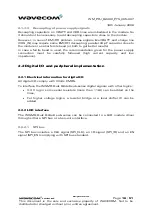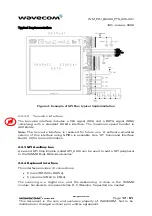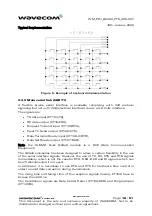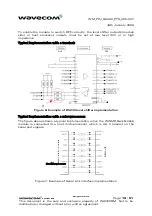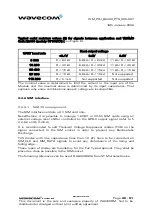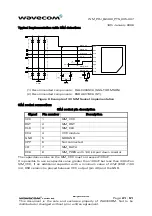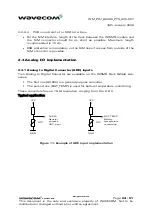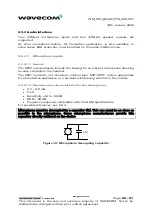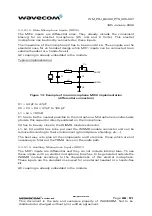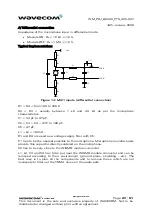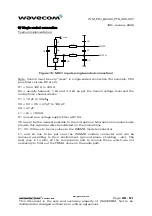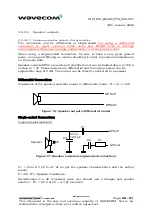
WM_PRJ_Q2400_PTS_005 -007
18th January 2006
Confidential©
All rights reserved
Page:
14
/
51
This document is the sole and exclusive property of WAVECOM. Not to be
distributed or divulged without prior written agreement.
Warning:
Attention must be paid to the power supply capacity when replacing a
WISMO Quik Q2403 module, on an existing application, by a Q24x6 module as
this last one is more demanding due to GPRS class 10.
Figure 3: Burst simulation circuit
2.1.2.3 Battery for handset integration
In a handset application, the WISMO Quik Q24x6 sub-series may be directly
connected to a Li-Ion battery (3.7 V typical voltage, with internal PCM –
Protection Circuit Module). The internal impedance of the battery must be lower
than 150 m
Ω
to limit voltage drop-out within emission burst (max. drop 0.3 V @
2W).
Battery internal impedance must take into account:
the internal impedance of the battery cell,
the protection circuit impedance,
the “packaging” impedance (contacts),
the PCB track impedance up to the WISMO module pin.
2.1.2.4 External DC power supply for vertical application
In a vertical application, the WISMO Quik Q24x6 sub-series may be connected to
DC power supply directly or via a DC/DC converter on the mother board. The
internal impedance of the power supply must be lower than 150 m
Ω
to limit
voltage drop-out within emission burst (max. drop 0.3 V @ 2W).
This impedance must take into account:
the internal impedance of the power supply,
the protection circuit impedance,
the “packaging” impedance (contacts),
the PCB track impedance up to the WISMO module pin.

















